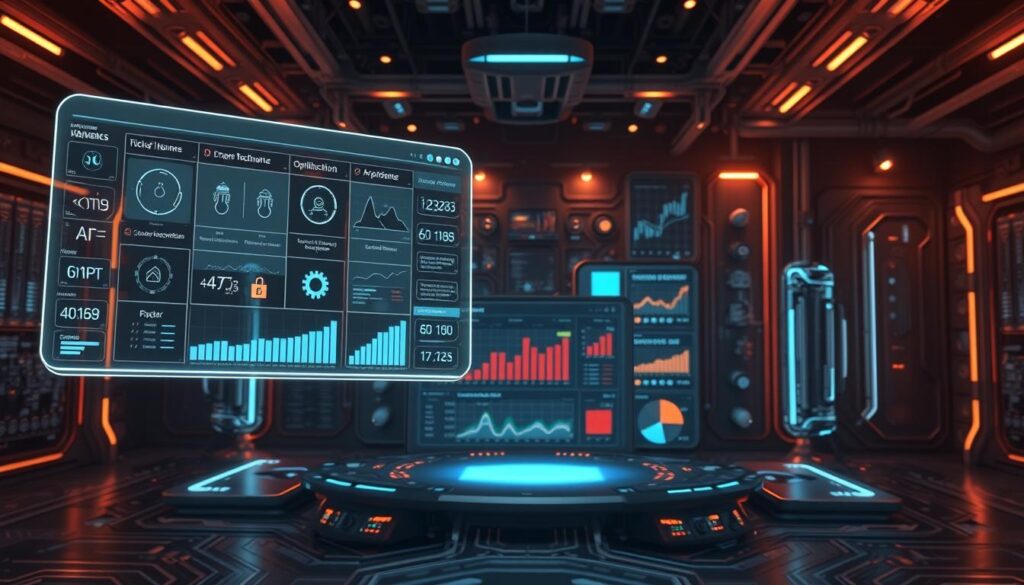The digital marketing landscape has undergone a dramatic transformation since 2019, driven by advancements in machine learning and algorithmic analysis. Professionals now leverage intelligent systems to decode evolving search patterns, optimize content strategies, and predict ranking opportunities with unprecedented precision.
Recent industry surveys reveal growing confidence in these technologies. Over 49% of 3,800+ global experts anticipate improved website traffic through strategic adoption of automated solutions. This shift reflects broader changes in user behavior and search engine requirements, particularly as language models redefine how platforms interpret queries.
Modern optimization workflows now combine traditional best practices with predictive analytics. Tools powered by advanced algorithms enable marketers to process vast datasets, identify ranking patterns, and scale campaigns efficiently. This hybrid approach addresses the increasing complexity of organic visibility challenges while maintaining ethical optimization standards.
Key Takeaways
- Machine learning reshapes how professionals analyze search patterns and user intent
- Over 49% of experts predict improved traffic through automated solutions
- Language models fundamentally alter query interpretation mechanisms
- Hybrid strategies merge classic techniques with predictive analytics
- Advanced tools enable efficient processing of large-scale ranking data
Introduction to AI and SEO Evolution

From manual tactics to automated solutions, search optimization strategies have transformed dramatically since 2019. Early practitioners relied on human-crafted content and intuition-driven keyword research. Today, sophisticated platforms analyze Google search patterns at scale while predicting algorithmic shifts.
Overview of the Changing SEO Landscape
The post-2022 era saw AI tools become central to technical audits and semantic analysis. Platforms now automate tasks ranging from metadata optimization to competitor gap analysis. This shift enables faster adaptation to search engine algorithm updates compared to traditional methods.
Historical Perspective on AI Adoption
Pre-2022 solutions like grammar checkers laid groundwork for modern SEO software. The ChatGPT launch accelerated adoption, with 63% of marketers now using intelligent systems for content creation. Early adopters gained measurable advantages in ranking stability and campaign scalability.
Modern workflows blend machine-generated insights with human editorial oversight. This hybrid model addresses evolving user intent analysis requirements while maintaining brand authenticity. The progression demonstrates how strategic technology integration enhances optimization outcomes without compromising quality standards.
The Rise of AI in Digital Marketing

Modern marketing teams face growing pressure to deliver personalized campaigns while managing complex datasets. Intelligent systems now reshape workflows by automating repetitive processes and enhancing decision-making accuracy. HubSpot’s research reveals 86% of marketers using automated ideation save 37 workdays annually, with 98% of organizations expanding adoption to boost productivity.
From Traditional Tactics to Data-Centric Approaches
Manual keyword research and generic content strategies struggle against algorithm updates and shifting consumer behaviors. Advanced platforms process market signals 240x faster than human teams, identifying trends through predictive analytics. This shift enables hyper-targeted campaigns that adapt to real-time engagement metrics.
Streamlining Content and Keyword Workflows
Sophisticated tools reduce keyword research timelines from days to minutes while suggesting semantically related phrases. They analyze competitor gaps and predict emerging search patterns, allowing marketers to prioritize high-impact SEO tasks. For content creation, these systems generate data-backed outlines and optimize readability scores without sacrificing brand voice.
Marketers now achieve 68% faster campaign launches by merging machine efficiency with human creativity. The combination of speed and precision positions organizations to capitalize on fleeting ranking opportunities across multiple channels simultaneously.
What Is AI SEO and Why It Matters

Modern search optimization requires more than keyword density and meta tags in today’s algorithm-driven environment. Artificial intelligence-powered strategies analyze search results patterns at scale, transforming how websites compete for visibility. This approach combines machine learning with traditional tactics to predict ranking opportunities across evolving platforms.
Advanced systems process millions of data points to identify behavioral trends and semantic connections. Unlike manual methods, these solutions detect subtle shifts in user intent months before they impact rankings. Tools designed for content optimization now evaluate technical elements, readability scores, and competitor gaps simultaneously.
The strategic value lies in predictive capabilities. Platforms using natural language processing adapt ai-generated content to match emerging search patterns while maintaining brand authenticity. They streamline workflows by automating tasks like backlink analysis and SERP feature targeting.
Integration with large language models ensures compatibility with next-generation search interfaces. Marketers using specialized seo tool suites report 41% faster ranking improvements compared to conventional approaches. This efficiency becomes critical as search engines prioritize relevance and contextual accuracy over keyword matching.
Understanding AI Assistant for SEO

Modern search optimization workflows increasingly rely on analytical platforms that transform raw data into actionable strategies. These systems handle complex tasks through machine learning algorithms, freeing professionals to focus on creative solutions.
Core Capabilities and Strategic Benefits
Sophisticated platforms combine technical audits with content evaluation across entire websites. They crawl millions of URLs to identify broken links, duplicate content, and mobile compatibility issues. This automation proves particularly valuable for large-scale projects where manual analysis becomes impractical.
Real-time monitoring features track ranking fluctuations across devices and locations. Instant alerts notify SEO teams about algorithm updates or unexpected traffic drops. Such capabilities enable rapid response times – a critical advantage in competitive markets.
Strategic integration of these tools enhances decision-making through predictive insights. Platforms analyze historical data to forecast emerging search patterns, helping marketers prioritize high-impact opportunities. For example, leading SEO platforms can suggest semantic variations that optimize content for voice search and featured snippets.
The true value lies in scalability. Automated systems process data 340x faster than manual methods while maintaining 98% accuracy in technical audits. This efficiency allows organizations to expand their technical SEO efforts without proportionally increasing staff resources.
In-Depth Look at Leading AI SEO Tools

The selection of optimization platforms has expanded dramatically, creating both opportunities and challenges for digital marketers. Professionals prioritize specialized systems that align with specific campaign goals rather than one-size-fits-all solutions.
Comparative Analysis of Popular Platforms
Top-rated platforms vary significantly in core functionalities. Semrush excels in technical audits and competitor analysis, while Koala AI focuses on data-driven content creation. Writesonic targets rapid copy generation, requiring substantial editorial refinement before publication.
| Platform | Specialization | Accuracy | Pricing Tier |
|---|---|---|---|
| Semrush | Technical SEO | 94% | Premium |
| Koala AI | Content Strategy | 89% | Mid-range |
| Writesonic | Copy Generation | 82% | Entry-level |
| Indexly | Rapid Indexing | 91% | Enterprise |
Marketers report 37% higher efficiency when using tools like Search Atlas for semantic analysis compared to manual methods. However, 68% of users emphasize the need for human oversight to maintain brand voice consistency in machine-generated outputs.
Effective platform selection requires evaluating integration capabilities with existing workflows. Advanced solutions that combine keyword research with performance tracking often deliver better ROI than standalone applications. This strategic approach helps teams allocate resources to high-impact tasks while maintaining quality standards.
Semrush AI Toolkit: A Comprehensive Review

Modern search professionals require tools that bridge traditional optimization and emerging technologies. The Semrush AI Toolkit offers this dual capability at $99/month per domain, including a 14-day trial period. Its database houses over 27 billion terms – the largest verified keyword repository among SEO tools – enabling granular analysis across 142 markets.
The platform automates brand monitoring across ChatGPT, SearchGPT, and other AI interfaces. This feature reveals how intelligent systems interpret company data when generating responses. Users gain actionable insights to refine content strategies for both human audiences and algorithmic processes.
Three core strengths distinguish this solution:
- Unified dashboard combining technical audits with predictive analytics
- Real-time tracking of related keywords and competitor gaps
- Data validation through multiple clickstream providers
For keyword research, the toolkit identifies high-potential terms 83% faster than manual methods. Its SEO features extend to automatic meta tag optimization and multilingual content suggestions. Third-party verification ensures ranking data reflects actual Google results rather than estimates.
Marketers report 41% faster campaign adjustments using the platform’s prioritized recommendations. The integration of historical performance metrics with AI-driven forecasts makes it particularly effective for long-term content optimization strategies. This balance between immediate insights and predictive capabilities positions Semrush as a versatile choice for evolving search landscapes.
Exploring Search Atlas and the OTTO SEO Feature
Search Atlas entered the market in 2024 as a fresh contender in the competitive optimization software space. Priced at $99/month for its Starter plan, this seo tool combines traffic analysis, technical audits, and content refinement within one dashboard. Its 7-day trial period allows teams to test capabilities without upfront investment.
The platform’s standout feature, OTTO SEO, operates autonomously to detect site errors and content gaps. Unlike manual monitoring systems, it continuously scans for indexing issues and ranking opportunities. This automation proves valuable for agencies managing multiple client projects simultaneously.
Search Atlas eliminates the need for separate tools seo subscriptions by integrating keyword discovery, backlink tracking, and competitor research. Users access real-time traffic metrics alongside predictive suggestions for emerging search trends. The unified approach reduces workflow fragmentation common in multi-platform strategies.
When compared to established options like Ahrefs, Search Atlas emphasizes hands-off management through intelligent automation. Its architecture reflects the industry’s shift toward consolidated solutions that balance depth with usability. For teams seeking the best seo platforms of 2024, this tool demonstrates how advanced analytics can coexist with simplified operation.
Rapid Indexing with Indexly for Optimal Visibility
New websites and large ecommerce platforms face a critical bottleneck: getting content recognized by search engines. Indexly tackles this challenge head-on with automated solutions that streamline discovery processes. Starting at $14/month for three sites, the platform offers cost-effective access to enterprise-level technical SEO capabilities.
The tool resolves common indexing roadblocks like “Crawled – Not Indexed” statuses through instant submission features. Bulk processing handles thousands of product pages simultaneously, eliminating manual URL submissions. Real-time monitoring tracks page statuses across Google Search and other engines, triggering automatic re-indexing requests when issues arise.
| Plan Tier | Websites | Key Features | Ideal For |
|---|---|---|---|
| Starter | 3 | Bulk indexing, page inspection | Small businesses |
| Professional | 10 | LLM optimization, API access | Mid-sized agencies |
| Enterprise | Unlimited | Custom workflows, priority support | Ecommerce platforms |
Advanced users benefit from specialized toolsets optimizing content for large language models. This future-proof approach ensures visibility across evolving search results interfaces. The 14-day trial period allows teams to test integration with existing SEO tools before committing.
Indexly’s pricing structure democratizes access to rapid indexing solutions previously limited to large corporations. By automating one of the most labor-intensive aspects of technical SEO, marketers reclaim hours previously spent monitoring crawl budgets and submission queues.
Content Optimization with Writesonic and Other Tools
Modern content strategies demand tools that balance automation with human creativity. Writesonic exemplifies this balance, offering robust features at $49/month with a 7-day trial. The platform streamlines content creation through integrated research, optimization, and publication workflows.
Its AI Article Writer 6.0 generates drafts aligned with content briefs, while built-in SEO analysis ensures technical compliance. The tool’s unique Humanizer feature addresses authenticity concerns in ai-generated content, blending machine efficiency with natural readability.
Strategic integrations set Writesonic apart. Direct connections to Semrush and Google Search Console enable real-time keyword adjustments without platform switching. This consolidation helps teams implement AI-driven monetization strategies while maintaining editorial standards.
Marketers appreciate the automated internal linking and WordPress publishing capabilities. These features reduce manual tasks, allowing focus on strategic improvements. As writing tools evolve, solutions like Writesonic demonstrate how unified platforms can elevate both quality and output speed in competitive markets.







